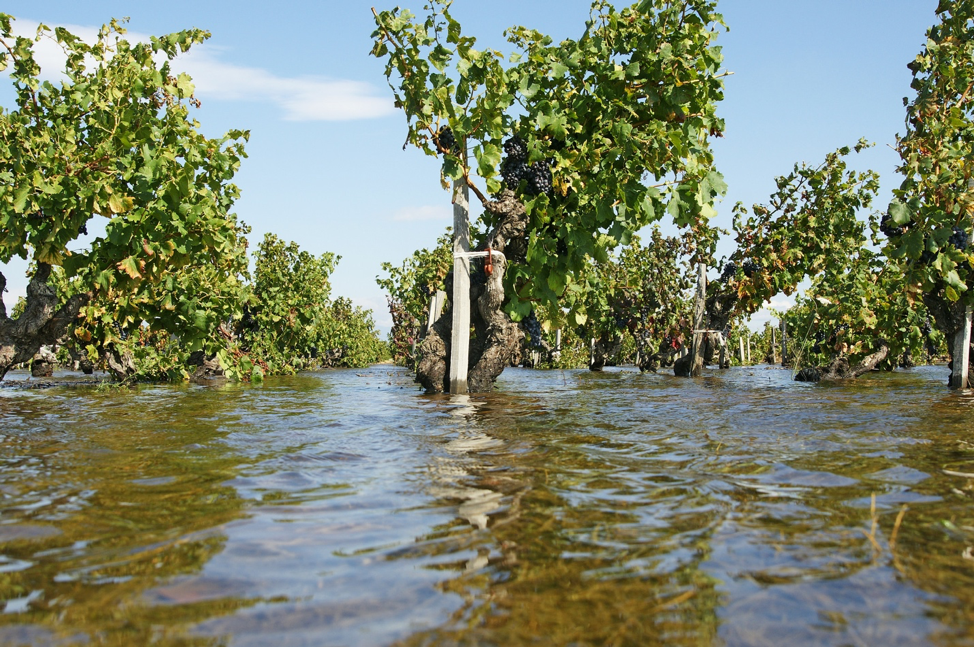
 Article by Lois Henry, CEO/Editor of SJV Water, a nonprofit, independent online news site covering water in the San Joaquin Valley. Reach her at lois.henry@sjvwater.org and visit/subscribe at www.sjvwater.org
Article by Lois Henry, CEO/Editor of SJV Water, a nonprofit, independent online news site covering water in the San Joaquin Valley. Reach her at lois.henry@sjvwater.org and visit/subscribe at www.sjvwater.org
May 12, 2020 – In the world of groundwater recharge, not all dirt is created equal.
Where, when, how much and how fast water can best be recharged into the Central Valley’s severely depleted aquifers has become a critical question.
A new tool aims to help answer those questions at the field-by-field level or up to an entire county.
The Groundwater Recharge Assessment Tool, or GRAT, was spearheaded by Sustainable Conservation, a nonprofit group that works to find collaborative solutions to some of California’s thorniest problems, including water and land use in the valley. It worked with Earth Genome, an environmental data crunching group, to develop GRAT.
GRAT is one of a host of new high-tech tools being used in the valley to look at everything from how much water a plant uses as it grows to the locations of river channels deep beneath the Earth’s surface.
The importance of effective groundwater recharge was noted in a new U.C. Davis study that looked at how likely Central Valley subbasins were to achieve sustainability based on reductions in groundwater pumping.
Cuts to pumping would have to be fairly drastic to increase sustainability likelihood beyond 50 percent. That, of course, could cause serious economic consequences, the study found.
However, “Smaller reductions will be needed if groundwater recharge can be increased in wet seasons and years. Some estimates find that 15-30% of long-term overdraft in the Central Valley could be supplied by additional groundwater replenishment,” the study states.
But flinging water blindly onto any open plot may not be the most effective method of recharge.
Data upon data
The GRAT computer program includes layer upon layer of information, topography to soil composition. Users, agricultural water districts or municipalities, can enter information about their water infrastructure and even historic and predicted water availability based on weather patterns to plan for different scenarios such as prolonged drought or flooding.
Water managers can use that data to find the most strategic and cost-effective spots in their districts for groundwater recharge. And they can identify the best soils for percolation that are nearest to their infrastructure and, if the land is planted with crops, how much water those crops can withstand over how long a period.
GRAT even has a financial assessment function to help estimate the cost of different recharge strategies so districts can figure out how best to finance it different projects before investing a nickel.
Managers can also run the data using historic weather patterns to create plans for different water year types.
That’s important as California’s snowpack patterns become more unpredictable under climate change, giving us a dribble one year and a deluge the next.
It’s the excess water in those big years that managers are aiming to capture and store.
Sustainable Conservation has been working with farmers and water districts to understand how best to recharge groundwater for about 10 years now, said Executive Director Ashley Boren.
GRAT was developed in 2017 using grant funds from a private foundation for the Madera and Tulare irrigation districts. It’s been available to others since that time. Most recently, the Department of Water Resources has been working with GRAT on climate change scenarios in the Merced subbasin and new data began coming out from that effort earlier this year.
Boren is expecting GRAT to catch on as water districts begin implementing their Groundwater Sustainability Plans.
Many of those GSPs acknowledge significant data gaps about groundwater supplies and how best to manage those supplies. GRAT’s capacity to consolidate and compare such information could help close those gaps.
More than 50 people joined a GRAT webinar at the end of April for a demonstration of how the tool works.
“This is meant to be a dynamic tool, ongoing, not a one-time thing,” Boren said. “And it’s adaptive. Every time someone sees it in use, they ask if we can add this or that to it. It’s not cookie cutter.”
And though GRAT can focus down to the parcel level, the hope is it will be used on a larger scale to help districts, if not entire groundwater subbasins, strategize for sustainability.
Building a savvy program
The Tulare Irrigation District, one of the districts that helped develop and test GRAT, will be using GRAT for several programs, according to General Manager Aaron Fukuda.
“We’re using it to lay out a program for on-farm recharge,” he said, referring to the practice of heavily flooding fields, typically trees, during early spring runoff months. “We tried it in 2017 without any guidance and it was hit or miss.”
GRAT helps find prime recharge land “so you have confidence you’re getting the best bang for your buck,” he said.
On-farm recharge costs much less than building new percolation basins, which can be up to $40,000 per acre to buy the land and then do the environmental and construction work, Fukuda said.
Tulare Irrigation is also considering using GRAT to map the district’s best recharge plots so growers know what to plant or not to plant.
“Our growers are even more elaborate in their thinking about this, thinking we could use it to build a groundwater credit system. They’re savvy guys,” Fukuda said.
In the Madera Irrigation District, GRAT showed water managers how their district’s capacity to move water through canals and pipelines affects recharge, said Deputy General Manager Dina Nolan.
Some areas in the district had great recharge abilities but lacked infrastructure capacity to get large quantities of water to them.
“So, one of our projects could be to look at our capacity,” she said.
As GRAT testers, the Madera and Tulare irrigation districts didn’t have an initial startup cost.
But for others, GRAT’s entry fee isn’t cheap, and neither is its yearly subscription fee.
Cost varies by district size and complexity, Boren said, but generally it can be about a $150,000 to set up the system. The annual subscription fee is $10,000, according to Fukuda.
Plus, districts have to commit to inputting as much of their individual data as possible in order to get the most out of it, so there’s personnel time as well
Selling sand at the beach?
Considering the cost and amount of data input required of districts, is GRAT, essentially, just selling information to districts that they already have?
In a way, yes, but it’s also much more, said Daniel Mountjoy, Director of Resource Stewardship for Sustainable Conservation.
“What districts told us is they do have a lot of this data, but they need a better way to evaluate it to make better decisions,” Mountjoy said. “They also don’t have the ability to look out 20 years and plug in variable rainfall years and look at each canal and see where water would go on a given week. This tool gives them that ability.”
And while each district manager might be able to evaluate recharge potential within his or her boundaries, GRAT can pinpoint the best recharge options to enhance an entire subbasin. That’s how Turlock water managers are using it now, Mountjoy said.
As Groundwater Sustainability Agencies grapple with implementing plans to reduce groundwater pumping, Boren and Mountjoy expected potential uses for GRAT will increase.
“We are finding it’s closing some of our data gaps, the more information we include,” Fukuda said of the power of GRAT. “We’re thinking it could become our data management system.”
Look for more webinars and GRAT demos soon, Boren said.
